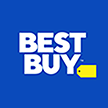Much has been written about the value of title tags, the most important of all SEO attributes. What’s often highlighted are the dos and don’ts in terms of syntax. From a pure conversion and marketing perspective, however, there is a lot of additional value to be squeezed out of title tags.
Ecommerce businesses have already begun to differentiate themselves within the search engine results pages to steal more clicks from the competition. To do so, they have looked at title tags as another marketing platform to convey offers, details on what’s inside (the site), to reinforce the brand’s value proposition, and to position by pricepoint.
1. Keyword Placement – Exact Match, Listed First
Keywords should be placed as exact match, starting with the most important term and following with the brand at the end. (If the brand is in the domain, this is already going to be a known match for the query.) Titles must be less than 70 characters; any term after this length is completely ignored.
Search engines read terms exactly as they are written, this means singular and plural are considered different terms and word order matters. By writing out key terms as exact match “emerald dresses” vs. “casual emerald cotton dresses” in the title tag, the page will more likely match the broader term.
In doing so, the site is giving the page better chances of being listed higher on the page in the results, which correlates with increased click-through rates. This also reassures searchers of the likelihood they will find product matching their query.
In a search for “popcorn maker,” the first result is a company’s name, followed by an Amazon category. (Unfortunately beating out Amazon in results is very difficult.) The first ecommerce result is Best Buy, with a title tag matching “popcorn maker” exactly. Search engines and consumers get a very clear sign what this result will return.
In a search “prom dresses under $100,” however, Nordstrom isn’t the first result, but it’s the first household brand name returned. A consumers knows from this title tag that she will be able to directly shop and buy prom dresses within her budget.
2. Free Shipping and Other Offers Included in Title Tag
Consumers have choices, not only where to shop, but which search engine listing to click. Offering free shipping has increasingly become necessary for all ecommerce businesses; consumer have now come to expect it, based on their experiences with Amazon, Zappos, and other sites.
Savvy retailers add this offer to their title tags to increase CTR.
Old Navy goes as far as letting the consumer know at what cart threshold he/she can expect to receive free shipping.
Many consumers are loathe to buy shoes online because of sizing/comfort/fit inconsistencies, so the promise of Piperlime’s free returns is another potential differentiator. Zappos has offered this as well for a long time now.
3. Reinforcing the Brand Value Proposition
For some pure play ecommerce sites, the search results offer another way to reinforce the brand value proposition. Bluefly, a designer discount site, highlights the potential savings of shopping the site, right within the title tag. Shop Designer Jeans here, and you might save 70 percent off full retail.
4. For Niche Categories, Optimize for all Keyword Variations
For niche terms and/or categories, optimizing for multiple lower volume terms can offer the potential of greater traffic in aggregate.
For Nordstrom, optimizing the women’s wrap dress category to also catch several variation types print, stripe, belted allows the single wrap category to stand on its own at the top of results for terms like “print wrap dresses” and “lace wrap dresses.”
For CafePress, a site which specializes in T-shirts and mugs of every stripe, optimizing around three terms which all have the same intent “find me a T-shirt from the movie the Hangover”. The site tries to capture all possible ways a consumer might search for the same product type. It also has helped them top results, even above Old Navy.
5. Action Words – Convey Search Intent
Though consumers are now used to shopping online, it still isn’t a given that you can buy every type of item this way. For example, not all stores sell furniture online, or if they do, the delivery or shipping costs are prohibitively expensive. In a search for “buy couch online,” the only optimized title tag result found is for Overstock.
This result reassures the searcher that by shopping Overstock, he/she could, in fact, complete a purchase online, rather than only browsing the catalog before making a trip to the brick-and-mortar store. The query’s intent is to make a purchase; Overstock’s title tag reinforces the intent.
Summary
Based on title tags alone, it seems that the first steps of commerce are beginning to take place right within the search engine result page.
A consumer can now get a better sense of offers and pricing before even leaving a search; this is a course charted by Google design and more readily apparent with the newer paid Shopping results. And Google’s algorithm orders results based on what will give the searcher (here the consumer) what he/she wants the fastest.
Author: Amanda Massello
Courtesy of www.searchenginewatch.com



















One Response
I’ll immediately clutch your rss feed as I can’t find your email subscription
link or newsletter service. Do you’ve any? Please permit me recognize so that I could subscribe. Thanks.